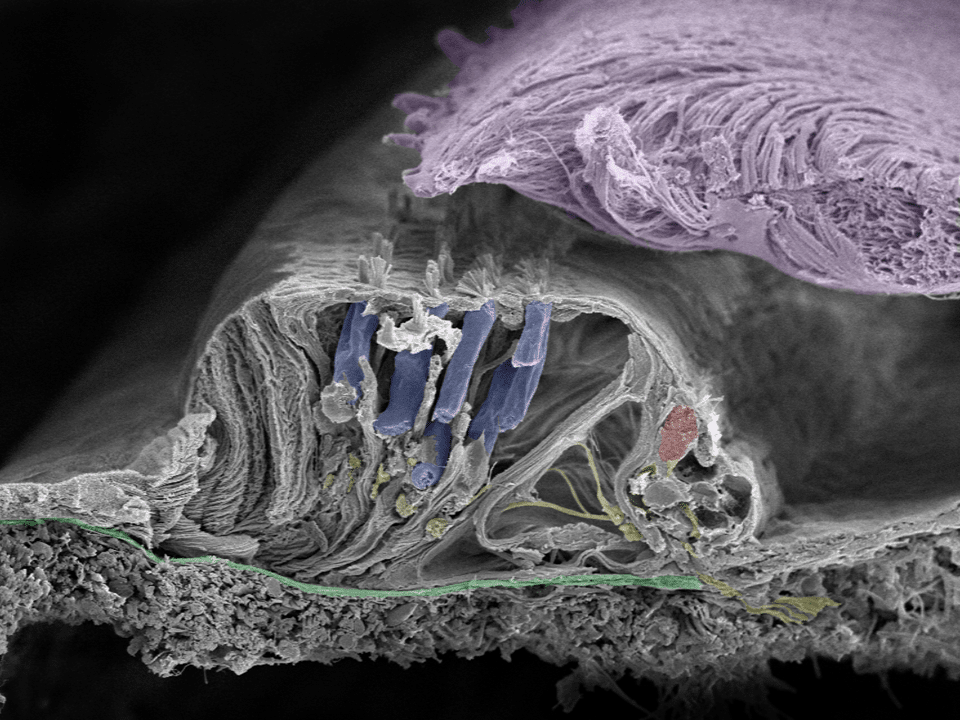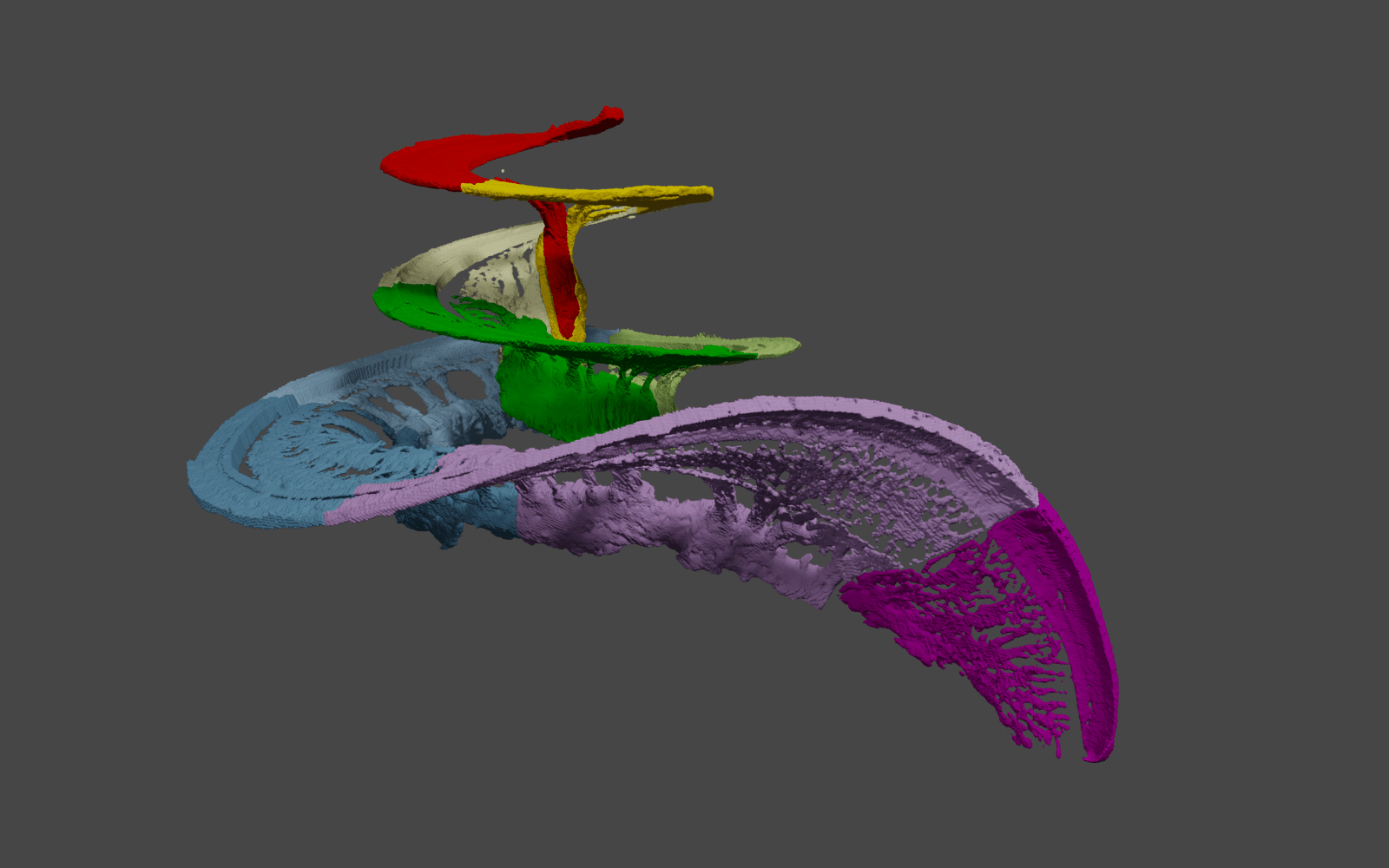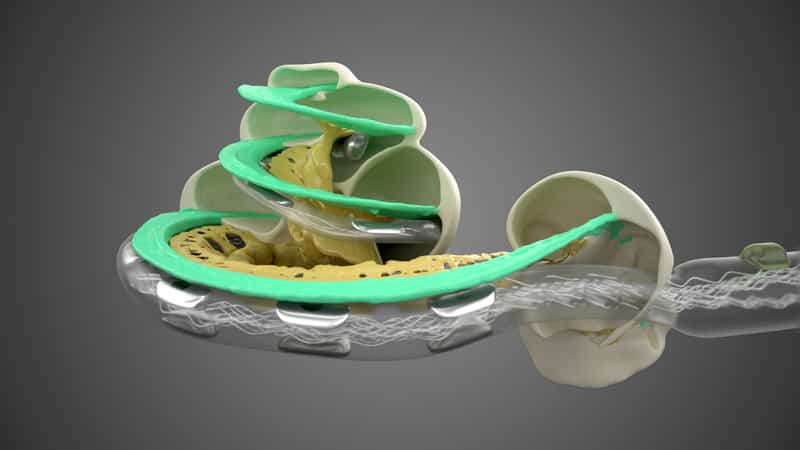
MED-EL
Published Oct 21, 2013 | September 25, 2024
5 Amazing Facts About the Ear
Our ears are small but mighty—especially the parts inside that we cannot see! They work constantly—sometimes with the help of hearing implants—to transform the sounds around us and deliver them to our brains, enabling us to perceive speech, music, and so much more.

Most people take their ears for granted, but how they enable us to hear is truly amazing. Let’s take a closer look at the fascinating complexity of our ears.
1. Turning Sound Into Hearing
Sound waves are almost everywhere. And it’s the job of the cochlea to recognize them. The cochlea is the innermost part of the ear and connects directly to the brain.
The ear picks up sound vibrations. They travel through the outer ear, then to the middle ear, and finally to the inner ear, also known as the cochlea. In the cochlea, these sound vibrations are turned into electrical signals that get sent to the brain. Then, the brain’s nerve cells take over, and we are able to perceive sound. And all of this happens almost instantaneously!
2. The Size of a Pea
Each cochlea is very small—about the size of a pea. From the outside, it looks like a tiny snail shell. Inside this tiny organ are many different structures that work together to turn sound into hearing.
The cochlea is rolled up into a spiral, but if you would unroll an average cochlea, it would be about 31.5mm long. The cochlea can be a few millimeters wide at the base, but it is only fractions of a millimeter wide towards the very top. Contained within this tiny organ is everything your body needs to begin turning sound vibrations into hearing.

Photo courtesy of C. G. Wright, Ph.D., UT Southwestern Medical Center, Dallas, Texas
3. Over 20,000 Nerve Cells
Although the cochlea is tiny, it contains over 20,000 hair cells that turn sound waves into hearing.
Each cell is less than 20 micrometers or 0.0007 inches long! The hairs vibrate back and forth in response to sound waves, and then these vibrations are turned into electrical signals that travel through the auditory nerve to the brain.

4. The Full Spectrum of Sound
These hair cells are spread along the entire length of the cochlea. If you stimulate two hair cells that are far apart, you will hear two completely different sounds. This happens because of the way that the hair cells are arranged along a membrane within the cochlea.
The membrane is short and stiff on one end and only responds to high-pitched sounds (like the chirping of a bird). The other end is longer and more flexible and only responds to low-pitched sounds (like the beating of a drum). This geography of pitches is called “tonotopy.”

5. Endolymph Makes Waves
The part of the cochlea that touches the hair cells and the membrane is filled with a special fluid called endolymph. Because this fluid is heavier than air, it moves with more force. That means the hair cells and membrane can work more efficiently in these conditions.
Learn more about how hearing—and MED-EL hearing implants—work by reading about our philosophy of providing our recipients with closest to natural hearing.
References
-
[1]
Image taken in Innsbruck, Austria with a Zeiss field emission microscope by Prof. Rask-Andersen together with Annelies Schrott-Fischer, Rudolph Glueckert, and Kristian Pfaller.
References

MED-EL
Was this article helpful?
Thanks for your feedback.
Sign up for newsletter below for more.
Thanks for your feedback.
Please leave your message below.
Thanks for your message. We will reply as soon as possible.
Send us a message
Field is required
John Doe
Field is required
name@mail.com
Field is required
What do you think?
© MED-EL Medical Electronics. All rights reserved. The content on this website is for general informational purposes only and should not be taken as medical advice. Contact your doctor or hearing specialist to learn what type of hearing solution suits your specific needs. Not all products, features, or indications are approved in all countries.
Raquel del Carmen Chávez
September 26, 2024
Mi nombre es Raquel. Solicito costo de los audífonos, gracias
MED-EL
September 26, 2024
Hi Raquel, thank you for reaching out. We recommend getting in touch with your local MED-EL team for any questions regarding product pricing and purchasing. Please reach out to them directly via: https://www.medel.com/contact-med-el Kind regards, Gordana
Kerim
September 28, 2024
Merhabalar Medel de şunu gördüm sadece ürünü satincaya kadar sizinle ilgileniyorlar ürünü aldıktan sonra biraz alakasizlar Birde ürünlerinizin ve parçalarının fiyat bilgilerini paylaşırsanız çok iyi olur bir fiyat almak için saatlerce uğraşıyoruz basit bir işlemci kapağı vs Yeni aldığım Rondo 3 te bazı kafama takılan sorular var ama Konya'da bir büronuz olmadığı için her defasında Ankara İstanbul gidemeyiz günümüz şartlarında 121 bin TL ye cihaz alıyoruz soru soracak kişi bulamiyoruz zaten iletişimde sıkıntı yaşıyoruz 3 4 seneyi buldu bu cihazlarla bir türlü telefonda iletişim kuramiyorum Yardımcı olursanız sevinirim İyi çalışmalar Rondo 3 un kapak fiyatı nedir
MED-EL
September 30, 2024
Hi Kerim, thanks for your comment. For any information about product purchasing in Turkey, please reach out to the local team via https://www.medel.com/tr#contact. They are best placed to answer all your questions. In the meanwhile, we've forwarded your message to the responsible team so they can also reach out to you directly. Kind Regards, Giulia

MED-EL

MED-EL

.png)



Conversation
2 Comments